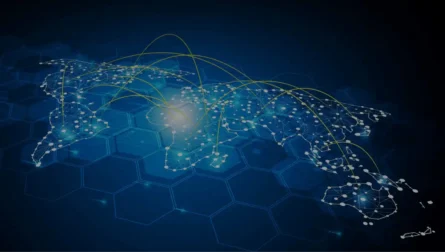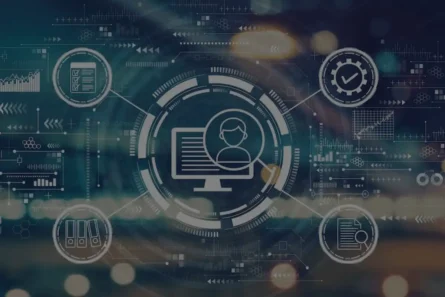Trends in software production shift at a breakneck rate. Languages, protocols, algorithms, methodologies, and a multitude of other information engineering elements grow year after year. As a result, every newly introduced paradigm or architecture could become obsolete within a year.
For several companies, moving digital is the best option to sustain a relationship with consumers and continue operating in an increasingly technological environment. Global business tech investment totaled $426 billion this year and is forecast to increase by 7.2 percent to $492 billion in 2021, according to Statista.
Simply adapting current technology is insufficient to remain ahead of the competition. To stay current and, indeed, to outrun the market, you must keep an eye on the latest cutting-edge new technology. The following is a summary of the eight software creation patterns that we believe would affect the technology market in 2021 and beyond.
1. The Ascendancy of Things Intelligence (IoT)
Market expenditure on smart home solutions jumped to $103 billion in 2019, according to Statista. Smart homes and personal assistants have now permeated our everyday lives, and the emphasis is now turning to a more ubiquitous Internet of Things.
Artificial intelligence has evolved into a critical feature of the vast majority of our stand-alone computers. It has been ingrained in everyday life, and it is this ingrained nature that is expected to change the landscape: from the Internet of Things to the Intelligence of Things. This proliferation of next-generation intelligent devices would disrupt a wide variety of sectors, from automobiles to agriculture.
The following are only a handful of the many IoT usage cases:
- Vehicles that are linked. IoT is critical to a connected car’s success, as it enables various advantages such as in-car purchases, automated driving, on-the-go dinner reservations, and remote app updates.
- Enhancing the distance education experience. Tablets, tablets, and even smartphones are only some of the connected computers that are assisting educators in preserving instructional systems during the age of social distancing and beyond.
- Management of assets and facilities. Real-time monitoring enabled by IoT sensors has the potential to significantly increase performance and accountability in the management phase.
- Analytics that is predictive. Connected sensors may be used to track the health of appliances and avert any possible problems.
- Remote Healthcare. Smartwatches and other Internet of Things-enabled gadgets may be used to track a patient’s condition and notify their doctor in the case of a decline. These instruments’ logs may also be used to support physicians during the course of care. Market expenditure on smart home solutions jumped to $103 billion in 2019, according to Statista. Smart homes and personal assistants have now permeated our everyday lives, and the emphasis is now turning to a more ubiquitous Internet of Things.
- Vehicles that are linked. IoT is critical to a connected car’s success, as it enables various advantages such as in-car purchases, automated driving, on-the-go dinner reservations, and remote app updates.
- Enhancing the distance education experience. Tablets, tablets, and even smartphones are only some of the connected computers that are assisting educators in preserving instructional systems during the age of social distancing and beyond.
- Management of assets and facilities. Real-time monitoring enabled by IoT sensors has the potential to significantly increase performance and accountability in the management phase.
- Analytics that is predictive. Connected sensors may be used to track the health of appliances and avert any possible problems.
2. Artificial Intelligence is the future in making
Artificial intelligence is a rapidly emerging field in computer science in which computers analyze massive amounts of data and execute human-like functions based on their findings. Machine learning, machine learning, and natural language processing are only a few of the various capabilities of artificial intelligence all of which can be applied at scale across an organization.
According to International Data Corporation, the global artificial intelligence industry will hit $156.5 billion by the end of 2020. And AI is no longer a passing movement in software development; it has evolved into a game-changing power in today’s technical landscape.
AI has facilitated the implementation and rollout of innovative, highly customized technologies through a variety of sectors, including retail, healthcare, banking, and logistics. Businesses will begin to embrace AI as a top app creation pattern during the next few years in order to provide a more personalized interface to their customers/users, streamline their processes, increase competitiveness, and much, much more.
3. The rise of hybrid and progressive apps
Progressive web apps (PWAs) combine the functionality of a website and a smartphone phone. PWAs, like native apps, will operate in the background and deliver push alerts. However, unlike native applications, PWAs are linkable, cross-platform (no different codebases for Android and iOS), and do not need app store participation.
Additionally, hybrid product architecture encompasses features of native and mobile applications. Hybrid apps are built by combining the functionality of native and web applications using a specific interface. According to Statista, the most commonly used platform by global developers in 2020 would be React Native (42%). Flutter, Cordova, Ionic, and Xamarin are additional common cross-platform mobile frameworks.
Twitter, Forbes, and AliExpress are only a few of the many high-profile businesses that have already embraced PWA strategies due to their many advantages. And, after implementing PWA, Pinterest saw a 60% increase in core participation and a 40% increase in time spent on the platform.
4. Cybersecurity is important now more than ever.
Globally, the expense of data breaches would hit $3.86 million in 2020. Add to that the current pandemic and the resulting digital transition, and cyber criminals are receiving an increasing number of chances to launch a novel assault. By identifying chinks in an organization’s IT amour, robust protection controls will deter theft, knowledge leaks, malware, ransomware, phishing, and other cyberattacks from ever happening.
45 percent of businesses with complete security integration are capable of patching dangerous bugs within a single day. Integrating protection technologies such as hashing protocols, fraud prevention algorithms, and blockchain-based solutions will help mitigate critical security vulnerabilities and protect the organization from cyberattacks.
5. Immersive environments continue to grow in importance.
Digital reality is not a novel idea and has already established a foothold in the industry. However, as the pandemic progressed, and real-world opportunities were rare, virtual worlds were able to mimic the outdoors and lure a greater number of users. According to an Accenture survey, 61% of respondents choose to buy using augmented and virtual reality (AR/VR).
Mixed reality (MR) is the ideal marriage between augmented reality (AR), which takes the interactive environment of the actual world, and virtual reality (VR), which can produce an interactive experience that is lifelike. MR has a plethora of applications across a wide spectrum of markets, including the following:
- Tours and travels in virtual reality. Lockdowns around the globe have forced museums, zoos, exhibitions, and amusement parks to close their doors, bringing the transport and entertainment industries to a grinding halt. Digital encounters, on the other hand, allow customers to discover new locations and destinations from the convenience and security of their own homes.
- Training with simulations. Virtual reality and augmented reality systems build immersive simulations in a digital world, facilitating the teaching phase while allowing learners to exercise their abilities and consider the implications of their decisions.
- Shopping online. Players in the eCommerce business will enhance customer interactions by adding try-before-you-buy functionality driven by immersive technology.
6. Deployment of platforms with minimal coding.
The term “low code network” refers to one of the newest app creation developments in the technology sector. Low code creation tools are designed to empower someone with a concept and little to no coding skills to create their own apps.
For example, Amazon Honeycode may assist in streamlining the process of developing applications for a basic activity or event management, whereas Parabola is an automation tool designed to simplify processes via an intuitive drag-and-drop GUI. IT teams will harness the benefits of low code tools to accelerate the production phase and free up resources for new concepts.
7. 5G is reimagining how networks operates.
5G is one of the most cutting-edge innovations that is supposed to revolutionize the global telecom industry. By the end of 2020, the 5G technology industry is projected to reach $5.53 billion, rising to $667.90 billion by 2026.
5G should be thought of as a technological enabler for the Internet of Things and upcoming new technology devices, as 4G runs at a slower pace and requires significant power, reducing battery life. By contrast, 5G is expected to have lower latency, increased network capacity, and enhanced data protection. Developers would be able to build increasingly efficient applications, and consumers would benefit from enhanced experiences delivered at a higher rate.
8. Cost of operation as a result of architecture health.
Agile methodologies and DevOps methods have resulted in improvements to cloud computing and service management. Thoughtworks published a new methodology in Technology Radar called “run cost as an architecture fitness feature.” The approach entails constantly tracking cost as a fitness feature (“fitness function” refers to the automatic regulation of a product’s non-functional characteristics that change over time).
We encourage teams to consider the run expense of a device in terms of the architecture fitness feature, which means: Have an eye on the expense of providing your facilities in comparison to the value delivered; if you see variations from what was planned or acceptable, have a conversation about whether it’s time to develop your architecture.
Conclusion
2020 has disrupted several facets of everyday life and, as a result, fueled the growth of several emerging tech creation patterns. Businesses seeking to differentiate themselves in an intensely competitive sector must respond to evolving conditions and, as a result, keep up with the diverse app development industry.
The pioneers of the potential industry are determined by prominent and commonly followed developments, but it is not always clear where to begin and how to implement these emerging innovations. Therefore, you may wish to suggest enlisting the assistance of a nearshore technology partner to explore the advantages and disadvantages of various technologies and to determine their suitability for use in your market setting.
If you want to take advantage of new technology to gain a competitive edge, Contact us today.








